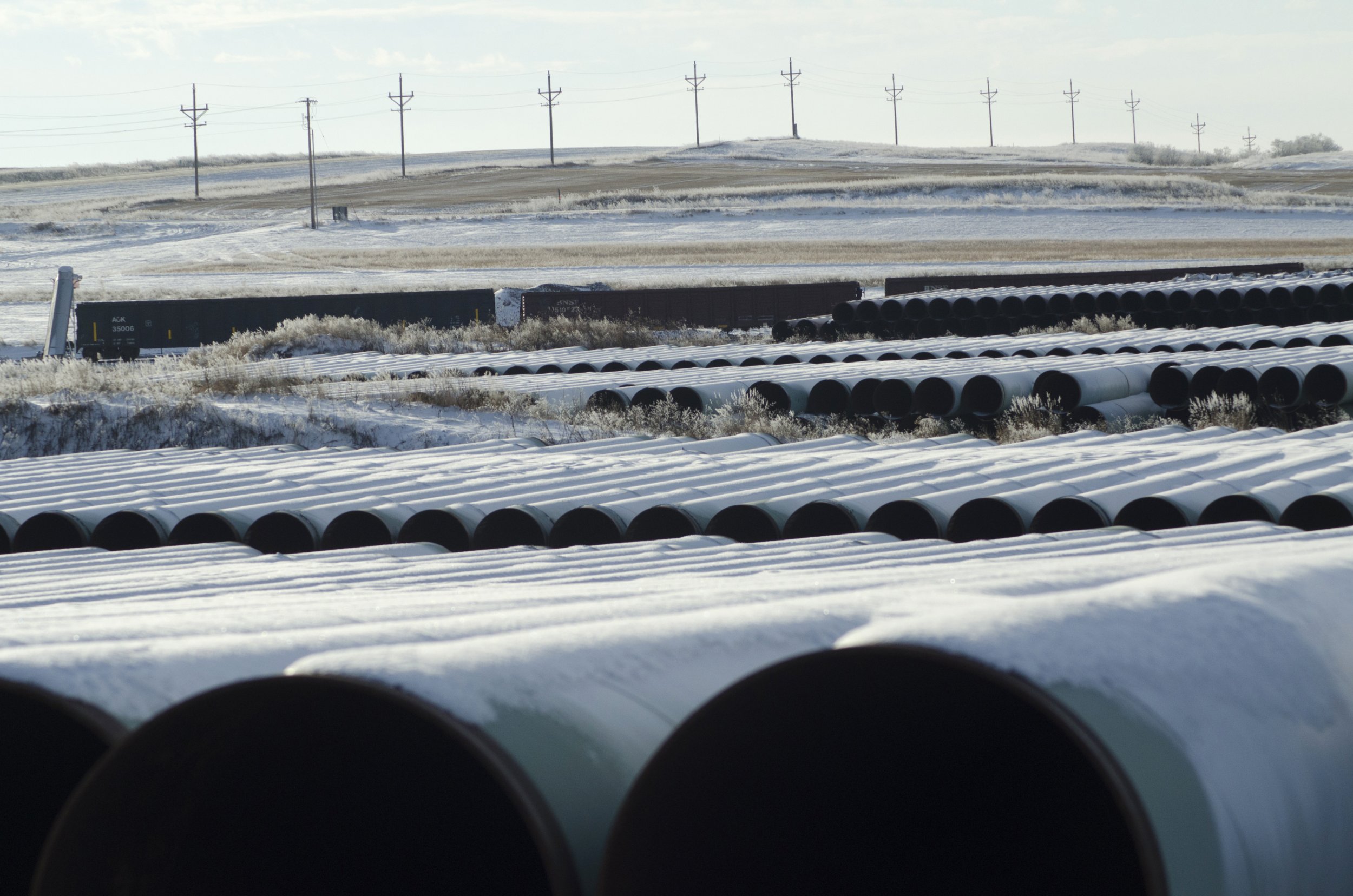
In a 59 to 41 vote, the U.S. Senate voted to reject the Keystone XL pipeline Tuesday evening after several hours of intense debate. The vote is a blow to the career of Sen. Mary Landrieu (D-La.), who led the coalition in support of the tar sands pipeline and faces a runoff election in December. But even if the vote had passed, President Obama's staff suggested he would likely veto any legislation that Congress passed while the State Department is still undergoing its review of the project.
But despite the outcome on Tuesday, the fight over the future of Keystone XL is far from over. When Republicans take control of the Senate in January, Congress will likely be staffed with enough pro-Keystone senators to pass the legislation and possibly even override a presidential veto.
Concerns Over the Economic Impact, and Measly Job-Creation
One popular pro-pipeline argument—cited on the Senate floor multiple times Tuesday by Senators in favor of Keystone—is that it will reduce the nation's dependence on foreign oil. While some of the crude may remain in the U.S., a large portion of it will be exported out of the Gulf of Mexico.
"Understand what this project is," Obama said last week in Myanmar. "It is providing the ability of Canada to pump their oil, send it through our land, down to the Gulf, where it will be sold everywhere else. That doesn't have an impact on U.S. gas prices."
The project was originally conceived six years ago to supply U.S. markets, Reuters reports, but since then, the American shale boom has reshaped the energy landscape entirely:
"Canadian crude once urgently sought to reduce a growing U.S. reliance on foreign oil may now end up being a surplus commodity in a region suddenly awash in oil," according to Reuters.
In a report released last week, the U.S. Energy Information Administration (EIA) said it foresees domestic crude oil production surging 20 percent by the end of 2014 from its level at the beginning of the year. As Inside Climate News points out, that's the equivalent of 1.4 million barrels of U.S.-produced oil to be available each day, which is roughly twice as much as the Keystone would bring in from Canada.
Due to the fact that much oil the will be diverted to Keystone will be exported to markets overseas, some say the pipeline will raise gas prices. Nonprofit research group Consumer Watchdog predicts the Midwest will be especially hard-hit, because much of the Canadian oil currently processed in Midwestern refineries will be diverted to the Keystone pipeline for refining near the Gulf. The Midwest currently imports more than half of its oil for refining from Canada, according to the group.
"Increases at the pump could range from 25 cents to 40 cents a gallon, depending on how regional refineries respond to paying $20 to $30 more per 42-gallon barrel for Canadian crude oil," according to Consumer Watchdog.
A 2011 study conducted by Cornell University's ILR Global Labor Institute, which works with trade unions on environmental and other challenges, concluded that by rerouting oil from the Midwest for global export, the Keystone XL pipeline could cost those states up to $4 billion in higher gas prices, which would in turn "suppress other spending and will therefore cost jobs."
A State Department report released in February found that after one or two years of temporary construction jobs run out, the Keystone XL pipeline would only generate 35 permanent jobs and 15 contractors.
On ABC News on Saturday, the CEO of TransCanada said that despite the fact that the firm will hire 9,000 employees initially, the post-construction "actual operating jobs are about 50."
"Furthermore, pipeline spills, pollution and increased greenhouse gas emissions incur significant human health and economic costs, thus eliminating jobs," Sean Sweeney, director of the Cornell ILR Global Labor Institute, said in a statement.
Spill Fears, Unknown Chemicals, and a Tribe in the Path Vows to Fight
Worries over the possibility of pipeline spills are central to the argument against the pipeline. Spills may be particularly environmentally hazardous because bitumen, the oil extracted from tar sands, is distinct from its conventional crude counterpart. It's thick and sticky, and must be diluted to encourage it to flow through pipelines. The chemical mixture used to dilute it is a trade secret, but often includes carcinogens like benzene (pdf).
If the diluted bitumen, or "dilbit," spills, it will be harder to clean up than conventional oil. One million gallons of this dilbit spilled into the Kalamazoo River in Michigan in 2010 in the biggest inland pipeline spill in US history. Enbridge, the Canadian pipeline company behind the spill, was wrapping up clean up this summer—four years after the spill itself—and some residents complain that the job is still not done.
Watchdog groups have raised concerns that dilbit is more corrosive than conventional crude, which raises the possibility of leaks (the industry denies this, so pipeline technology has not changed). Activists say cleanup of the unconventional material is significantly more difficult.
The president of the Rosebud Sioux tribe in South Dakota announced Friday he would consider building the Keystone XL pipeline, which is slated to cut through the Rosebud Sioux reservation, to be an "act of war" on the part of the U.S. government. He said if the pipeline is approved, he would seal off the reservation, to prevent its installation within its borders.
With Much of the Pipeline Already in Place, TransCanada Has a Backup Plan
Once completed, the Keystone XL pipeline would stretch just under 1,200 miles long. About 40 percent of the total project has already built, NPR reports. Keystone is currently transporting oil in two segments: The first, a 298-mile stretch, brings oil from Steele City, Nebraska to Cushing, Oklahoma, and the second, a 485-mile segment, moves between Cushing and Nederland, Texas. These sections will likely continue running as usual if the Keystone XL portion is never built.
TransCanada has a strategic backup plan in the event the Keystone XL never sees the light of day: Last month, the company applied to build the "Energy East" project, a 2,858-mile pipeline that would transport Alberta tar sands to the east coast of Canada for export.
Greenpeace Canada obtained documents that outline a campaign to promote Energy East, the company's proposed 2,858-mile pipeline that would transport crude oil from the Alberta tar sands to the east coast of Canada. Bloomberg News described the project as an "oil route around Obama."
Uncommon Knowledge
Newsweek is committed to challenging conventional wisdom and finding connections in the search for common ground.
Newsweek is committed to challenging conventional wisdom and finding connections in the search for common ground.
About the writer
Zoë is a senior writer at Newsweek. She covers science, the environment, and human health. She has written for a ... Read more





